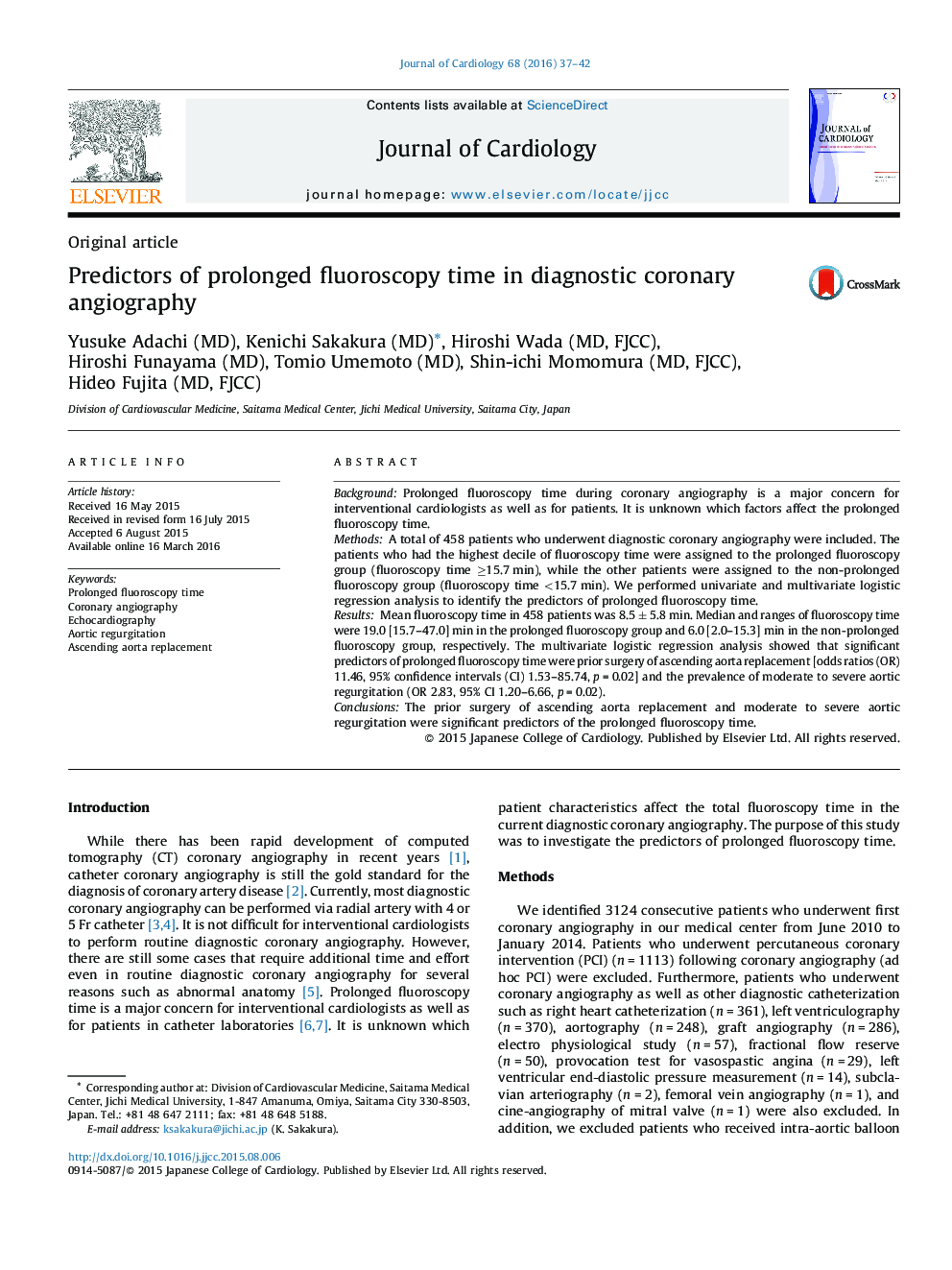| Article ID | Journal | Published Year | Pages | File Type |
|---|---|---|---|---|
| 2962753 | Journal of Cardiology | 2016 | 6 Pages |
BackgroundProlonged fluoroscopy time during coronary angiography is a major concern for interventional cardiologists as well as for patients. It is unknown which factors affect the prolonged fluoroscopy time.MethodsA total of 458 patients who underwent diagnostic coronary angiography were included. The patients who had the highest decile of fluoroscopy time were assigned to the prolonged fluoroscopy group (fluoroscopy time ≥15.7 min), while the other patients were assigned to the non-prolonged fluoroscopy group (fluoroscopy time <15.7 min). We performed univariate and multivariate logistic regression analysis to identify the predictors of prolonged fluoroscopy time.ResultsMean fluoroscopy time in 458 patients was 8.5 ± 5.8 min. Median and ranges of fluoroscopy time were 19.0 [15.7–47.0] min in the prolonged fluoroscopy group and 6.0 [2.0–15.3] min in the non-prolonged fluoroscopy group, respectively. The multivariate logistic regression analysis showed that significant predictors of prolonged fluoroscopy time were prior surgery of ascending aorta replacement [odds ratios (OR) 11.46, 95% confidence intervals (CI) 1.53–85.74, p = 0.02] and the prevalence of moderate to severe aortic regurgitation (OR 2.83, 95% CI 1.20–6.66, p = 0.02).ConclusionsThe prior surgery of ascending aorta replacement and moderate to severe aortic regurgitation were significant predictors of the prolonged fluoroscopy time.
